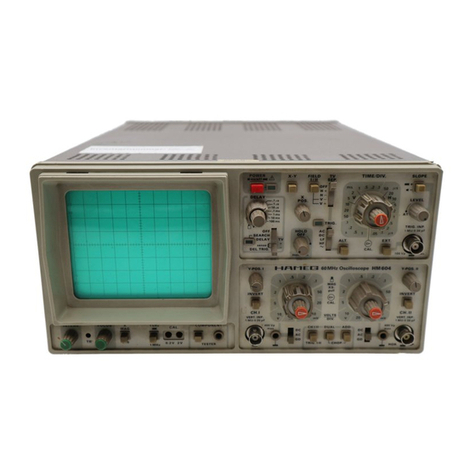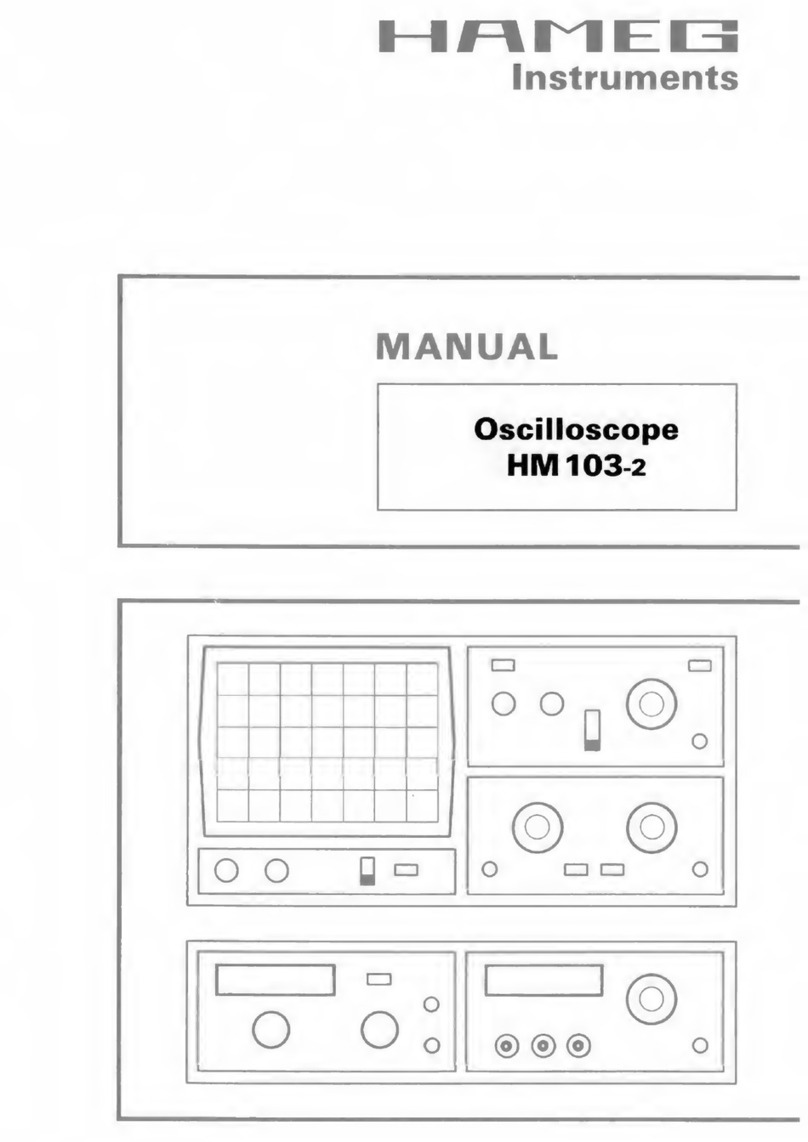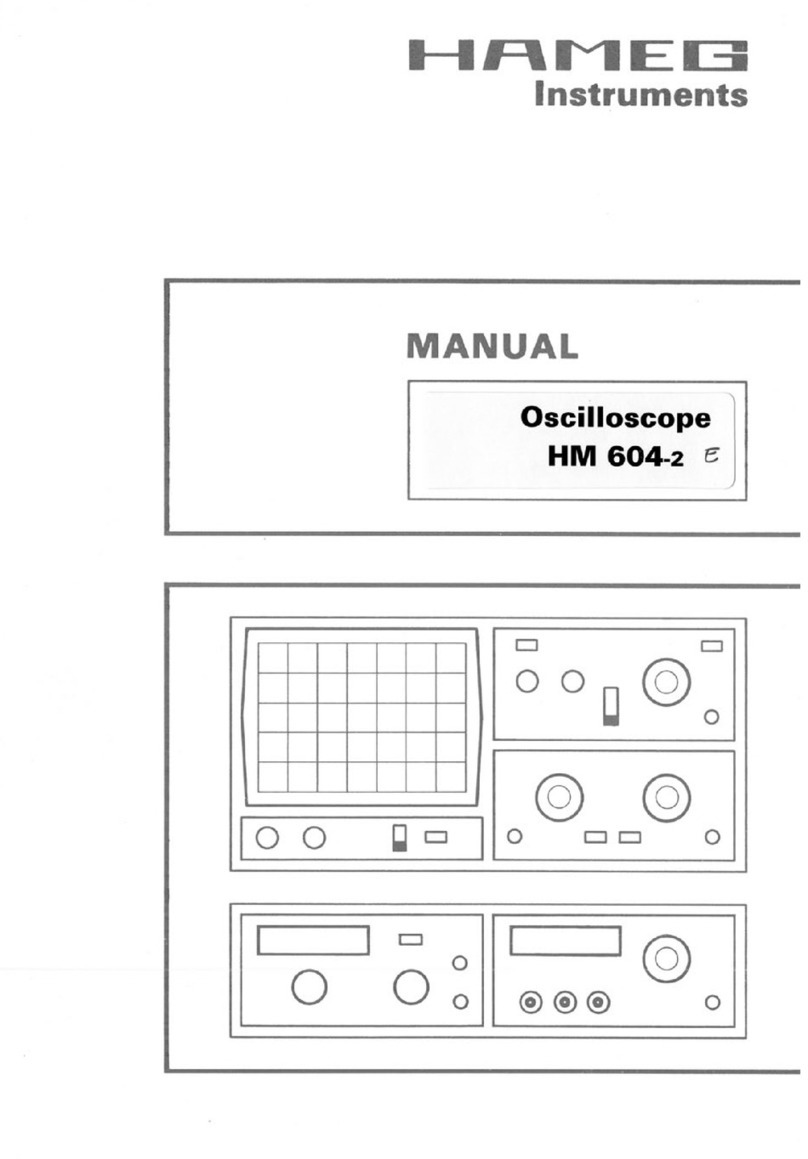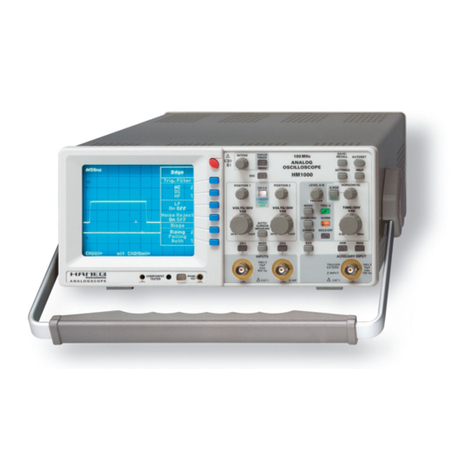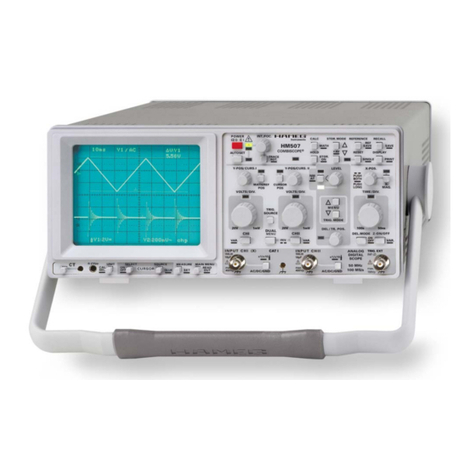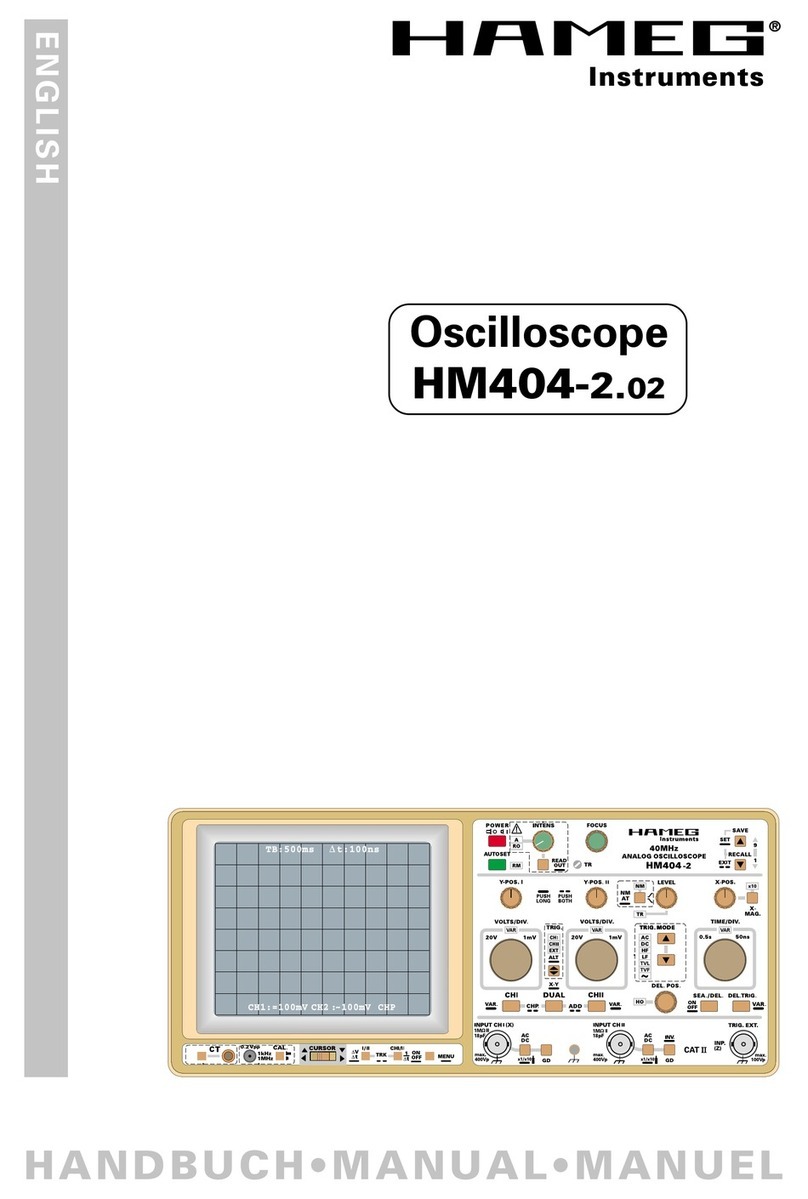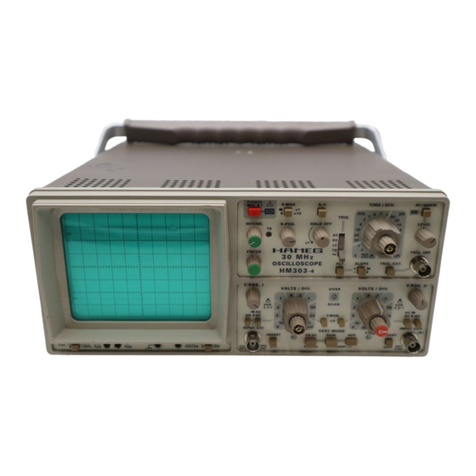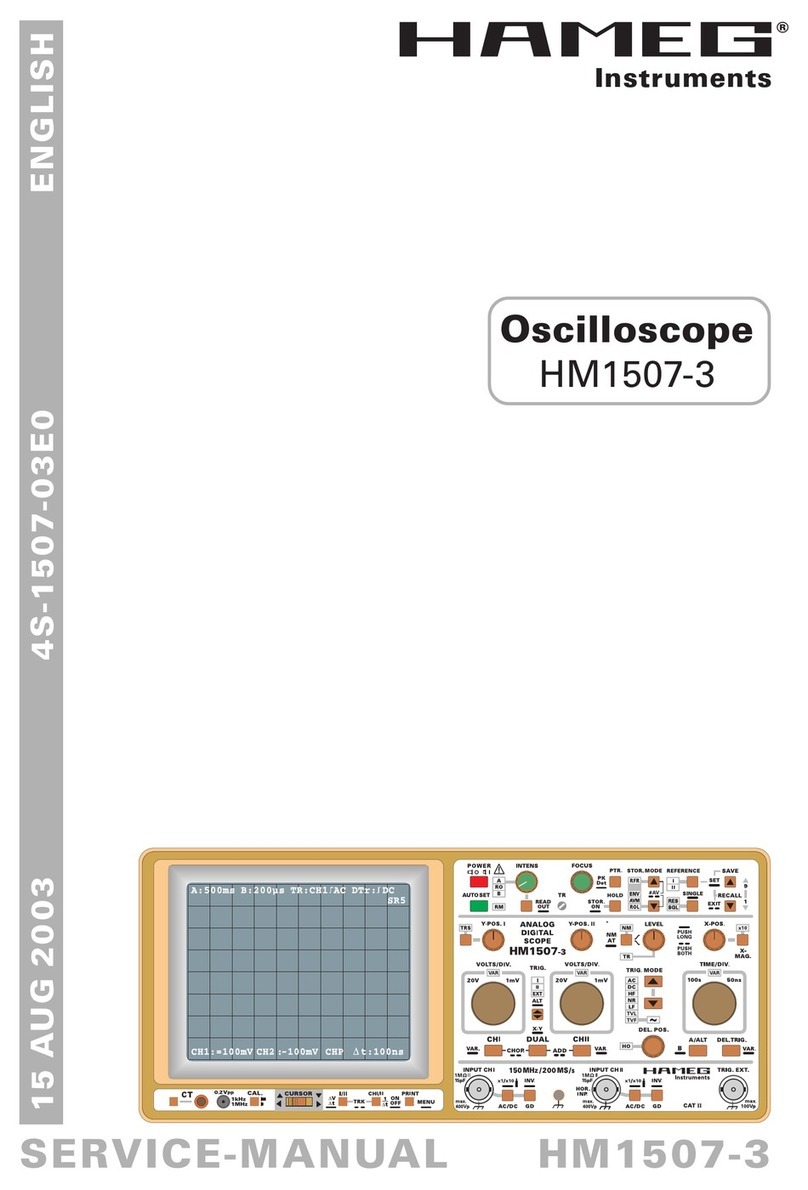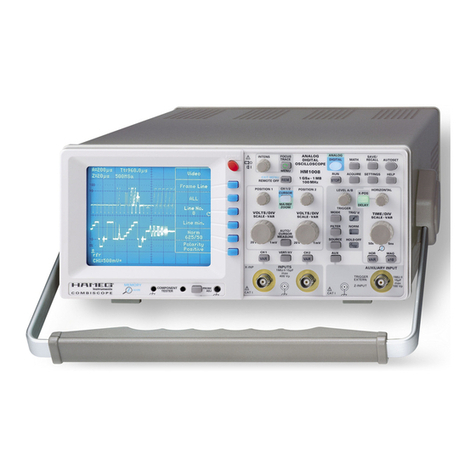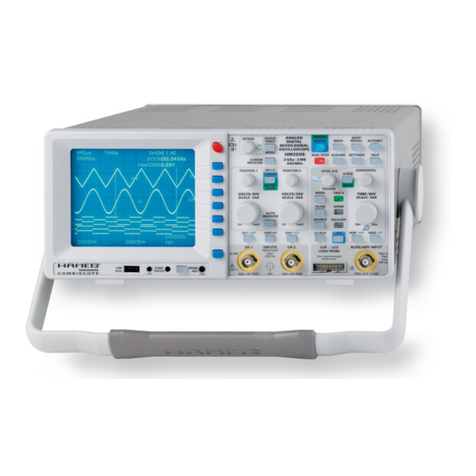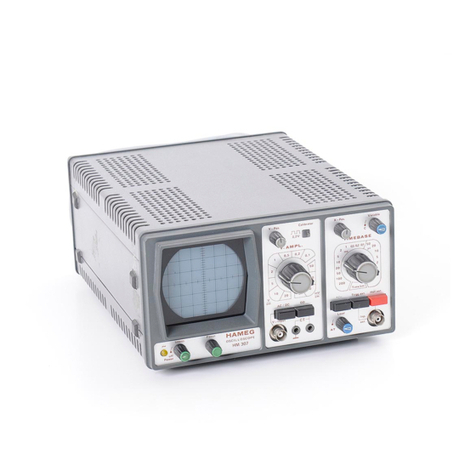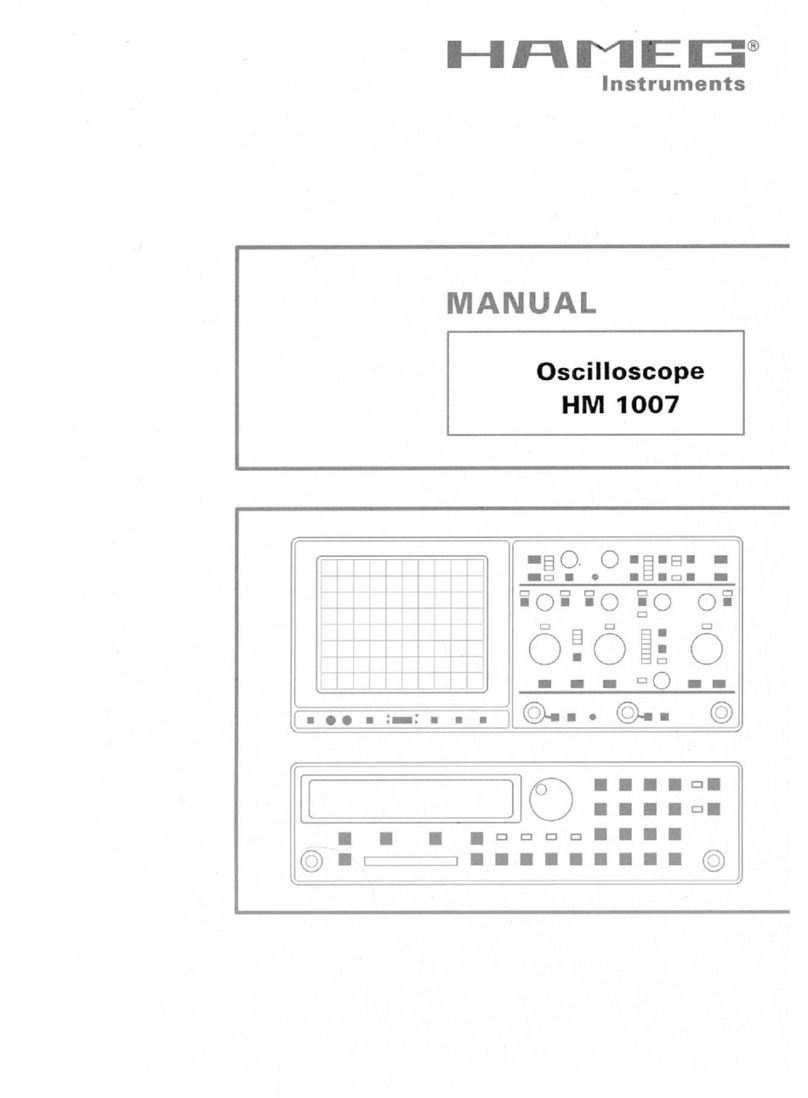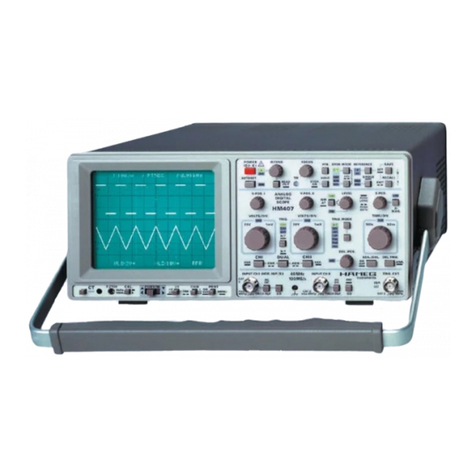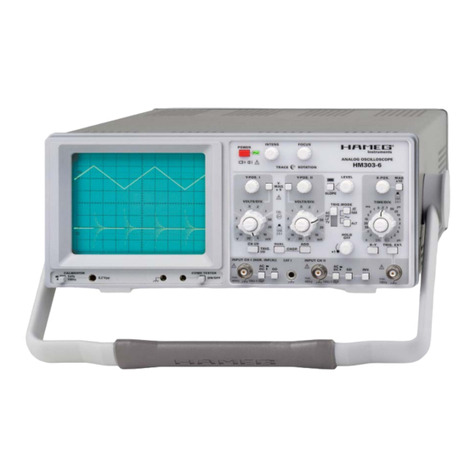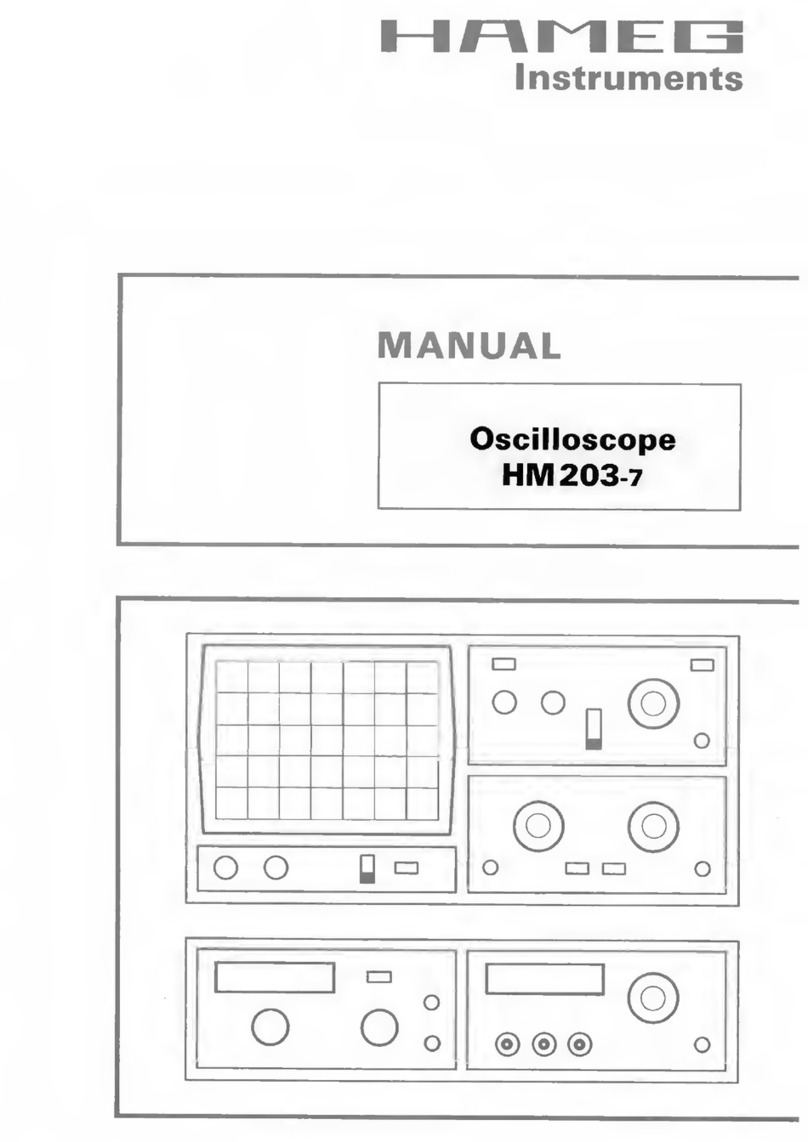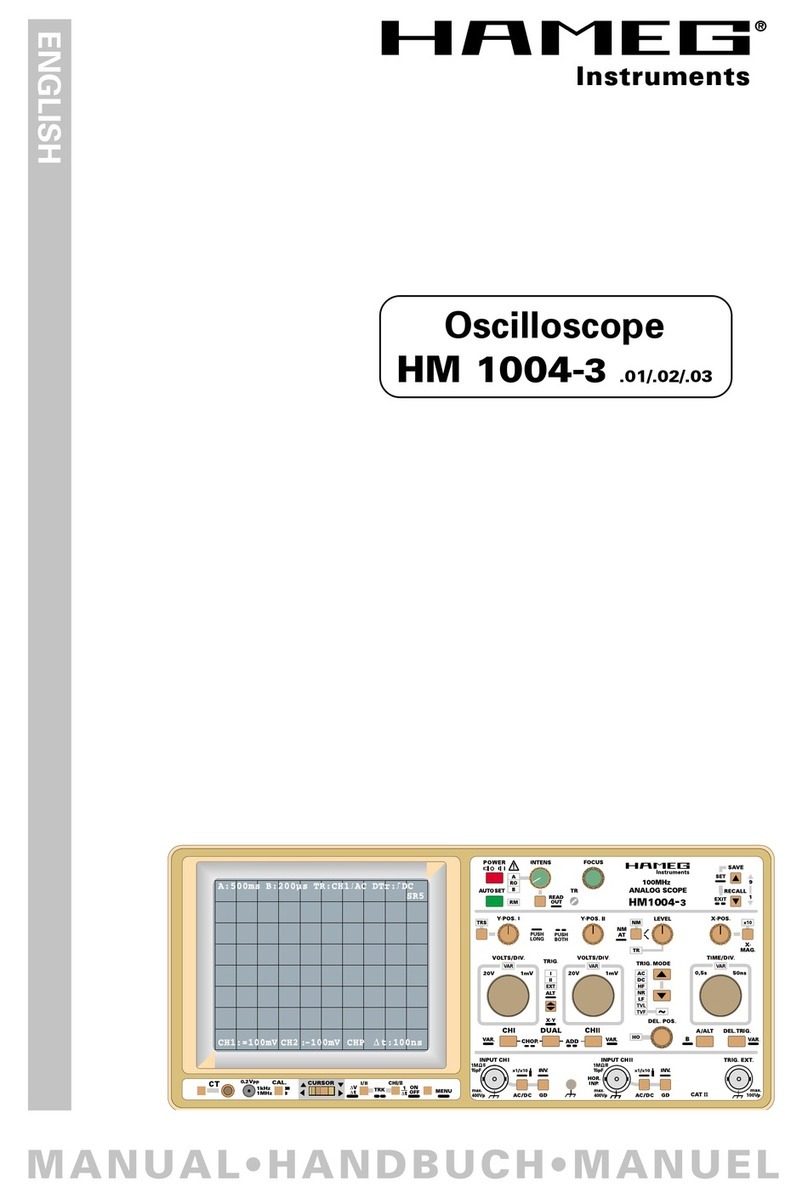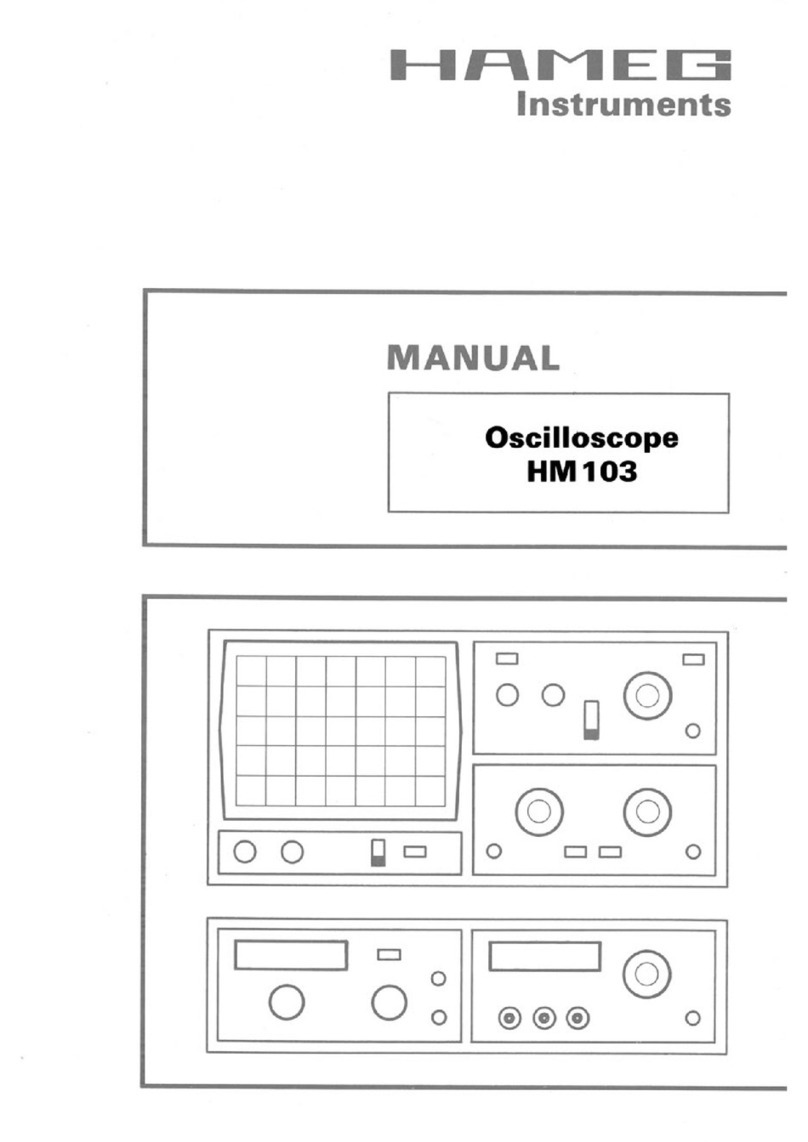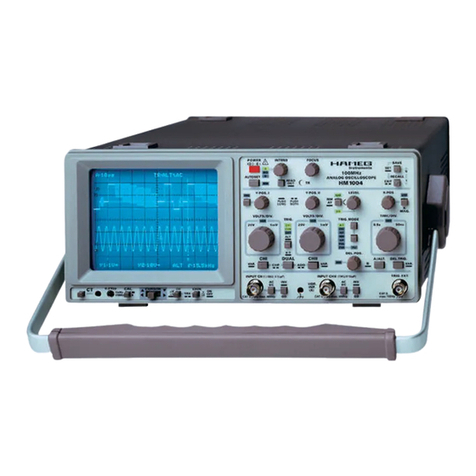
10 Subject to change without notice
Input signals are the trigger comparator signal, the tv sync.
pulses, the logic signals from sawtooth and hold off comparator
and the chopper blanking signal.
These signals and functions are controlled by the state of dif-
ferent modes such as trigger slope, automatic/normal trigger,
CT mode, XY mode and TV trigger settings.
3.9 Sawtooth Generator (TB) & Comparator
If the trigger conditions are met, the sawtooth generator is
activated so that a sawtooth is generated for X deflection -
deflecting the beam from left to right; additionally the beam
blanking is switched off so that the beam (trace) becomes
visible. The sawtooth speed depends on the time base switch
setting, which selects a capacitor to be charged by a selectable
constant current source and the time base variable control.
A voltage comparator output is connected with the time base
control circuit via a Flip-Flop (also connected with the hold
off comparator output). When the sawtooth maximum height
is reached, the sawtooth capacitor is discharged so that
the beam returns to the start position on the left side of the
screen. Additionally the blanking is switched on to make the
beam invisible during flyback and hold off time until the hold
off time has elapsed and the trigger circuit starts the sawtooth
generator again.
3.10 Hold Off Generator & Comparator
At the same time as the sawtooth is discharged, the hold off
generator is activated, and a capacitor is charged (time base
setting dependent). The purpose is to generate a waiting time
for beam flyback followed by a time in which triggering is
disabled. As the duration of the hold of f time is time base setting
dependent, it allows constant trace intensity at all time base
settings in automatic triggering condition, without signal.
A voltage comparator generates a signal when the hold off ca-
pacitor is charged to a certain value. The comparator output is
connected with the time base control circuit via a Flip-Flop (also
connected with the sawtooth comparator output). It generates
the signal for hold off capacitor discharge and prepares for the
next signal display which can only be caused by a trigger signal
in normal trigger mode. In automatic mode it can be caused
by a trigger signal but also by the automatic generator if no
trigger signal is present.
The hold off time can be increased by the HOLD OFF control
for pulse train triggering etc.
3.11 Blanking Amplifier & Intens
Blanking signal and the intensity control DC voltage are com-
bined in this stage and control the Blanking Switch & Amplifier
stage on CR Board.
4 CR Board
The CR board contains the Blanking Final Amplifier, the Blan-
king Switch & Amplifier, the Focus Control and the Astigmatism
Adjust. stage.
5 CC Board
5.1 CALIBRATOR Signal
The 0.2 Vpp calibrator signal is generated for probe adjustment
purposes. It is a square wave signal that can be switched from
1 kHz (probe adaptation to the oscilloscope input capacity) to
1 MHz (probe high frequency adaptation to the oscilloscope
frequency response).
3 TB Board
3.1 Sync. Amp.
The signal originating from the trigger channel switches enters
this stage for additional amplification and to be changed from
a symmetrical to an unsymmetrical signal.
In XY mode the output signal – originating from CH I – is used
for X-Amplifier control.
3.2 LF Filter
If LF Trigger is selected a capacitor is connected between Sync.
Amp. output and ground to short the higher frequencies of the
trigger signal.
3.3 AC/DC Select & Line
The Sync. Amp. output signal can pass this stage via a capa-
citor (AC coupling) if the AC switch is on or DC coupled if the
DC switch is on. In line/mains trigger mode both switches are
set to off and the line/mains trigger signal is introduced at the
output.
3.4 TV Sync. Separator & TV Slope Selection
The trigger signal originating from the Sync. Amp. output
passes a switch if TV triggering is selected and controls one of
two TV sync. pulse separator circuits; one designed for positive
and the other for negative polarity sync. pulses. With correct
slope selection, the relevant circuit separates the sync. pulses
from the picture content. At the output a capacitor is switched
to ground if time base settings suitable for frame triggering are
selected. The capacitor shorts the high frequency line trigger
pulses so that only the low frequency frame pulses appear at
the output. If time base settings are suitable for line triggering
the capacitor is switched off.
The output signal controls the Time Base Control AT/NM
Trigger IC (4008).
3.5 Trigger Buffer
The signal at the AC/DC Select & Line circuit output controls
the Trigger Buffer amplifier. The trigger signal at the Trigger
Buffer output is connected with the following 2 stages.
3.6 P-P Trigger & Level Control
In trigger and trigger coupling modes where Peak to Peak
triggering is used, the trigger signal is used to generate vol-
tages determining the minimum and maximum voltages for the
trigger level setting range. The trigger level can then be set
within these limits (trigger signal height dependent), so that the
trigger level is restricted to the signal height limits. Peak to
Peak triggering is only enabled in automatic triggering mode.
If normal (NM) triggering is selected or operating modes where
P-P triggering is switched off, the operating point of the P-P
circuit is set to fixed settings with positive and negative voltages
at the trigger level potentiometer that enable a level setting
over the full range.
The trigger level control DC voltage sets the operating point of
the trigger comparator.
3.7 Trigger Comparator
The trigger signal from the Trigger Buffer amplifier is compared
with the level control DC voltage in the trigger comparator and
generates a voltage change at the output each time the trigger
signal crosses the reference voltage.
The output signal controls the Time Base Control & AT/NM
Trigger stage.
3.8 Time Base Control & AT/NM Trigger
This circuit (IC4008) controls the sawtooth and the hold off gene-
rator, the automatic trigger generator and the trace blanking.
Short Description of HM303-6 Boards
